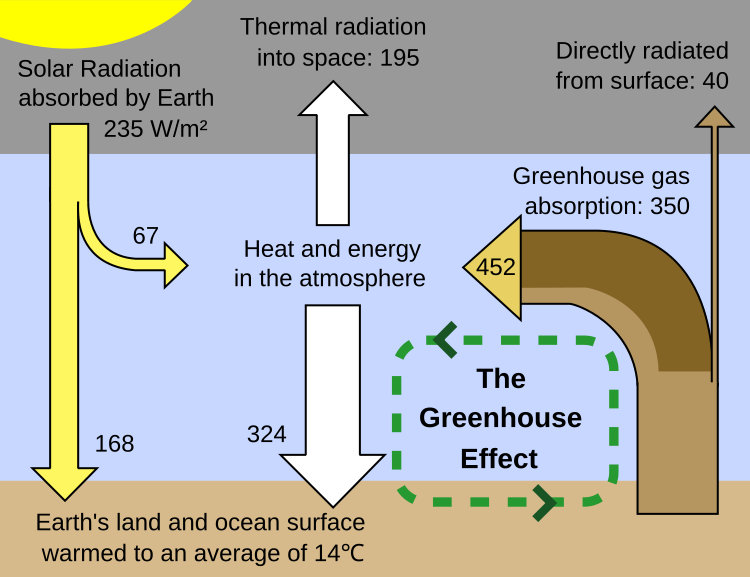File:Greenhouse Effect.svg
Appearance

Size of this PNG preview of this SVG file: 750 × 577 pixels. Other resolutions: 312 × 240 pixels | 624 × 480 pixels | 998 × 768 pixels | 1,280 × 985 pixels | 2,560 × 1,969 pixels.
Original file (SVG file, nominally 750 × 577 pixels, file size: 21 KB)
File history
Click on a date/time to view the file as it appeared at that time.
| Date/Time | Thumbnail | Dimensions | User | Comment | |
|---|---|---|---|---|---|
| current | 20:04, 31 August 2021 |  | 750 × 577 (21 KB) | Dragons flight | Revert to earlier version. Change is technically inaccurate. Energy flow balance requires that all forms of energy transfer are included, i.e. the land->atmosphere flow includes not only radiation but also conduction, convection, etc. Also, "heat radiation" appears to be colloquial. |
| 21:35, 22 August 2021 |  | 750 × 577 (21 KB) | Efbrazil | All heat radiation is now the same color, it is not clear why that was not the case before | |
| 20:31, 22 August 2021 |  | 750 × 577 (21 KB) | Efbrazil | A few text changes to make things more clear | |
| 17:42, 9 April 2020 |  | 750 × 577 (21 KB) | Efbrazil | Minor edit, improving alignment of text with larger font for thumbnail view | |
| 17:06, 30 March 2020 |  | 750 × 577 (21 KB) | Efbrazil | Improved fonts and alignment for thumbnail legibility | |
| 15:00, 25 October 2007 |  | 750 × 577 (21 KB) | Rugby471 | changed width | |
| 17:42, 2 October 2007 |  | 750 × 577 (20 KB) | Rugby471 | == Description == {{en|This figure is a simplified, schematic representation of the flows of energy between space, the atmosphere, and the Earth's surface, and shows how these flows combine to trap heat near the surface and |
File usage
No pages on the English Wikipedia use this file (pages on other projects are not listed).

































